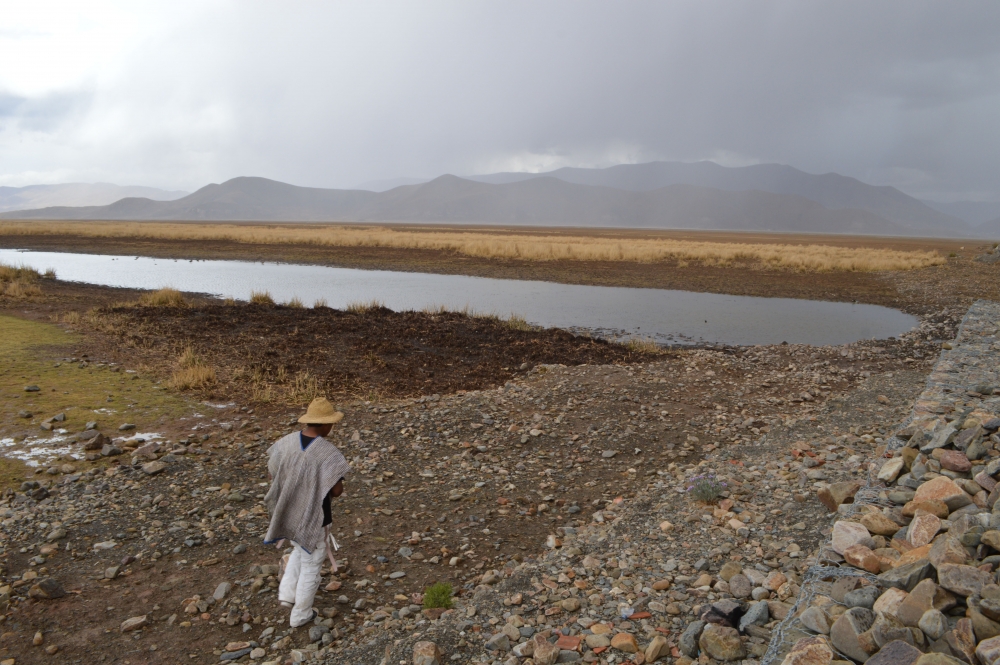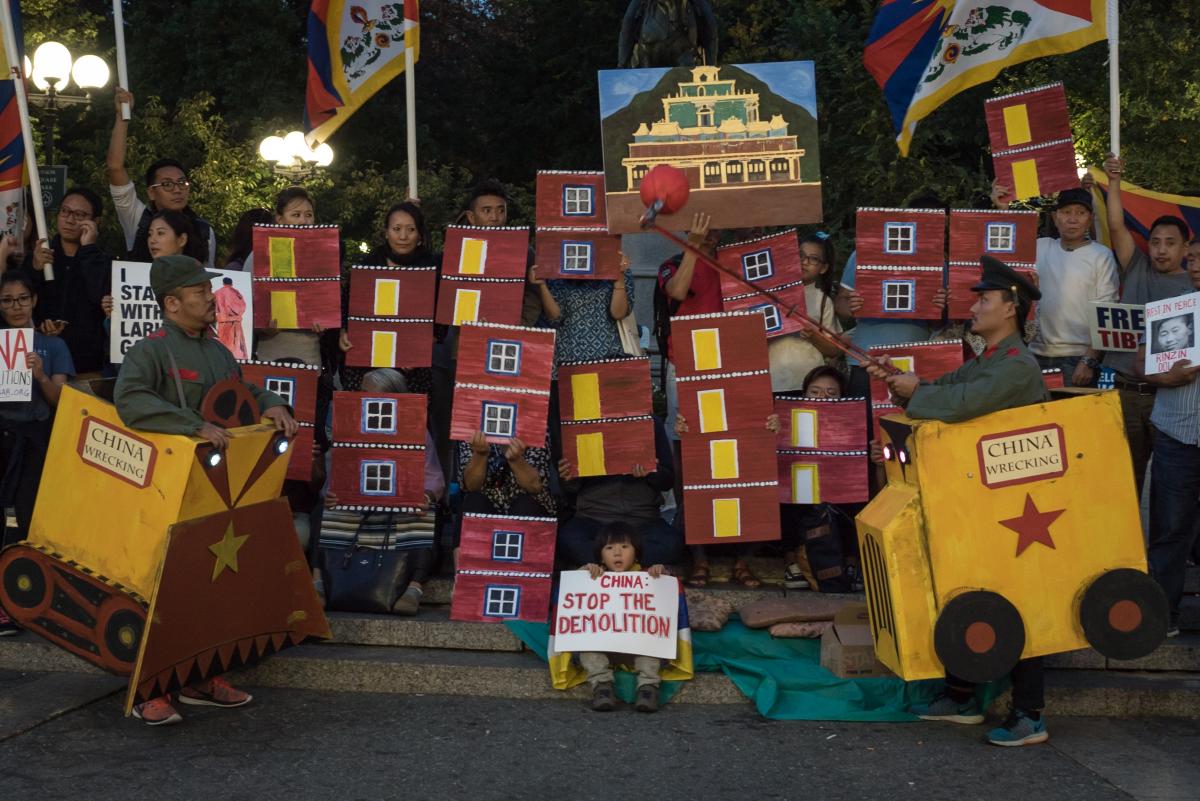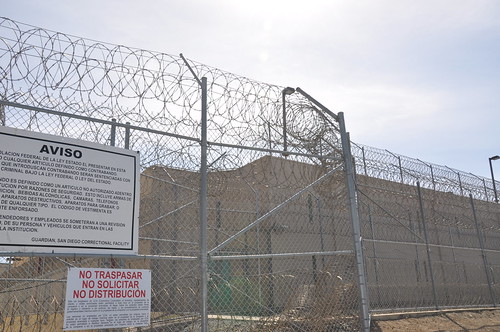Features
AMERICAN 'LEFT' ABETS TRUMP-PUTIN AXIS
by Bill Weinberg, Muftah
The United States is poised on the brink of a fascistic situation since the inauguration of Donald Trump. But the American left, logically the wellspring of resistance to the establishment of a fascistic order in the world's most powerful country, finds itself in a very compromised position.
With many Democrats denying the legitimacy of Trump's presidency on the basis of evident Russian manipulation of the election, it is a bitter irony that the most popular "progressive" voices are rushing to exonerate Moscow of meddling. Glenn Greenwald, Matt Taibbi, and Jeremy Scahill are among those effectively seeking to exculpate Vladimir Putin, demanding the CIA show its "evidence," as if this—and not preparing to resist Trump—were the urgent priority. It also ignores the reality that Trump's toeing of the Moscow line on Syria, Ukraine and NATO (not to mention his fawning praise of Putin) strongly points to a quid pro quo.
THE GLOBAL LAND-GRAB

by Bill Weinberg, Skunk Magazine
On Maple Street in the Brooklyn enclave of Prospect Lefferts Gardens there is a little plot of land filled with garden beds where local residents grow kale, garlic, beans, peppers and other such organic yummies. Aptly if not imaginatively named Maple Street Community Garden, this is, like many such gardens around New York City, reclaimed land. When local residents moved in and started turning it into a garden three years ago, it had for years before that been a blighted vacant lot, weeds growing amid dumped washing machines and car parts. "It was a total jungle," said Tom La Farge, one of the gardeners. He was shoveling compost when I dropped by the garden on a cold day in early March.
The garden has received some acknowledgement from pillars of the city's establishment. The Maple Street Block Association received a $1,000 grant from the Citizens' Committee of New York to clean up the lot. The garden is now part of the GreenBridge network, set up by the Brooklyn Botanic Garden to promote urban greening with plant and seed donations.
But on September 22, 2014, the brothers Michael and Joseph Makhani—partners in a limited liability company claiming to own the plot—showed up at the garden, tore down the sign on the fence reading "Maple Street Community Garden," and told the gardeners to clear out. When they refused, the brothers retorted, "You'll leave when the back-hoes come," La Farge recalls.
CLIMATE CHANGE & BOLIVIA'S CRISIS DROUGHT

by Amy Booth, IRIN
"This should be tremendous, deep. There should be karachi fish and silverside in here," says Abdon Choque Flores, pointing to a shoulder-high tide mark on the long road bridge that crosses the Desaguadero River in Bolivia's drought-hit Oruro department.
High on the Andean plateau, the Desaguadero used to connect vast Lake Titicaca with smaller Lake Poopó. But the second lake dried up in late 2015 and there is now so little water in the river that the stretch beneath the bridge is completely dry.
Flores lives in nearby Puñaka, a community of Uru people who traditionally made their living on Lake Poopó, fishing and hunting water birds for their meat and eggs. Now, the village looks across an expansive, white plain that stretches as far as the eye can see.
With the Urus' main source of food gone, along with the lake, many in the community have been forced to leave to find work in nearby towns. The government is providing those left behind with food aid, but it doesn't come close to plugging the gap. Flores says they chew coca to suppress their appetite.
Lake Poopó was once Bolivia's second largest lake, after Titicaca. Climate change has melted the Andean glaciers that fed the lake. Water from its tributaries has been diverted for mining and agriculture. But it was the country's worst drought in 25 years that dried it up completely.
NEW YORK CITY PROTEST AGAINST EVICTIONS ...IN TIBET

by Bill Weinberg, The Villager
"Stop the forced evictions! Stop the demolitions!"
That's what was repeatedly chanted, and what the big banner read, at the spirited rally of some 200 at Union Square the evening of Oct. 19. But this wasn't about the depredations of dirty New York landlords or saving historic East Village buildings from being cleared to make way for a luxury hotel. The large type above these demands on the banner read: "Stand With Larung Gar."
Larung Gar is the world's largest Buddhist sanctuary, in a valley in the traditional region of Tibet—although today officially in the Chinese province of Sichuan. At the rally, activists stood with painted cardboard cut-outs representing the monastery or Buddhist academy there, and smaller outlying buildings. Other cut-outs represented a bulldozer and truck-mounted wrecking ball, both "driven" by activists wearing People's Liberation Army uniforms. Sitting below the display were two monks in traditional robes, Tibetan flags draped across their shoulders.
Protest organizer Urgyen Badheytsang, who just arrived here from Toronto to work in the Students for a Free Tibet office on 14th Street, relates some of the history to me. The community was founded in the 1980s, when post-Mao China started to loosen up, by the lama Jigme Phuntsok, dedicated to preserving and reviving the Tibetan Buddhist tradition. It rapidly grew, with some 10,000 small cabins today lining the valley walls. These are what the Chinese government is now demolishing, claiming safety and overcrowding concerns. But Badheytsang doesn't buy it.
"It is political," he said. "China fears the growing influence of Larung Gar."
COUNTER-REVOLUTION CRUSHES ALEPPO

by Ashley Smith, Socialist Worker
The combined forces of Bashar al-Assad's regime, Russian air power and Iranian-backed Shia death squads are reconquering Eastern Aleppo, according to reports—and with it, the last of the major cities liberated by the Syrian Revolution since 2011.
"Aleppo is being destroyed and burned completely," Mohammad Abu Rajab, a doctor in Aleppo, said in a voice message quoted by the Guardian. "This is a final distress call to the world. Save the lives of these children and women and old men. Save them. Nobody is left. You might not hear our voice after this. It is the last call, the last call to every free person in this world. Save the city of Aleppo."
After it was freed from regime control in 2012, Aleppo was "a symbol of the democratic alternative that could be Syria," as Syrian revolutionary Joseph Daher put it.
That's why Assad and his Russian and Iranian allies declared unremitting war against it. They subjected Eastern Aleppo to a siege to starve its people and force them to flee.
ELECTORS MUST DUMP TRUMP
Electoral nullification is a Constitutional mechanism
—and now is the time to use it!

by Bill Weinberg, The Villager
The clock is ticking. We have until Dec. 19 to act. And the future of the country—indeed, the world—depends on it.
That's the day the Electoral College votes and makes Donald Trump's status as president-elect official. The electors have a duty to refuse to seat Trump—quite simply, on the grounds that he is a dangerous fascist, and it is unacceptable for a fascist to become the president of the United States.
I hope, after the appointment of white nationalist mouthpiece Steve Bannon as his top counselor, that it is not necessary make the case that Trump is an actual fascist. We have had many utterly monstrous presidents—Dubya and Poppy Bush, Reagan, Nixon. None of them were fascists. They did not openly play to racist hate, and they did not display Trump's dictatorial ambitions. Now we are looking at the Real McCoy.
It's ironic that the Electoral College—the institution that got us into this mess, by giving undue weight to "red state" voters—now holds the only hope of getting us out.
AMERICAN 'LEFT' ABETS GENOCIDE IN SYRIA

by Bill Weinberg, Fifth Estate
In the 1930s, the American left could claim solidarity with those who stood up to the authors of the Guernica terror in Spain. Today, in vivid contrast, it overwhelmingly stands on the side of fascism and genocide in Syria.
The Bashar Assad regime is daily raining death down on Aleppo and other besieged cities and towns, with massive military support from Russia. Hospitals have been targeted again and again, civilian areas reduced to rubble. Poison gas has been used repeatedly. After Assad supposedly eliminated his chemical arsenal in a Russia-brokered deal after the 2013 Ghouta sarin-gas attack, the regime merely turned to "repurposed" chlorine, dropped from "barrel bombs."
Starvation has become a weapon of the war, with the regime blocking food aid to besieged areas.
In areas the regime controls, it is now accused by the UN High Commissioner for Human Rights of a systematic "extermination" of the civil population—beginning with the prisoners. If only due to greater access to firepower and proximity to inhabited areas, the Assad regime has actually been responsible for far more civilian deaths than has ISIS.
This is the regime that the American "left" is, overwhelmingly, supporting. In response to this accusation, most "leftists" will retort that they are just against US intervention. The facts demonstrate otherwise.
TRUMP'S VICTORY AND MIGRATION
by Kristy Siegfried, IRIN
Note: This story ran on the eve of Election Day, on IRIN news service. —CounterVortex
Immigration has dominated the US presidential campaign like never before. Donald Trump's oft-repeated promise that, if elected, he will build a "big, beautiful" wall at the US-Mexico border helped secure him the Republican nomination, and his rhetoric about illegal immigration appears to have struck a chord with many working-class Americans.
But how many of his election promises on immigration are implementable? And what threat does a Trump presidency pose to migrant and refugee rights in the US and beyond?

















Recent Updates
8 hours 10 min ago
12 hours 15 min ago
13 hours 37 min ago
1 day 7 hours ago
1 day 7 hours ago
2 days 11 hours ago
2 days 11 hours ago
4 days 6 hours ago
4 days 7 hours ago
5 days 18 hours ago